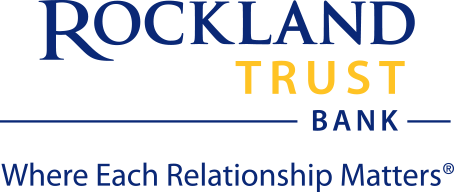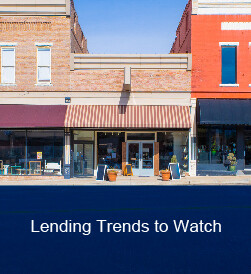Written by Steve Andrews

As 2022 began, inflation overtook COVID as the main concern facing investors. In addition to the pain caused by higher prices, they also worried about how the Fed would address the problem. By the start of the second quarter, the Fed had changed its mantra from: inflation is “transitory,” to a more aggressive posture, and investors feared that the Fed would be the Fed of old and tighten monetary policy until the economy slipped into a recession. These concerns increased when the GDP report for Q1 showed negative growth. US monetary policy is becoming more hawkish. The Fed has signaled that it intends to raise interest rates markedly over the course of the year, and that the Fed Funds rate will rise to “restrictive” territory (above 3.00%) by year-end. They will likely continue to rise to as much as 4.00% in 2023. This could dampen consumption and growth in business investment, and adversely impact employment as well. While these fears have some merit, it’s worth noting that the most recent recessions have not been the direct result from Fed tightening. In 2020 the economy was shut down, while the 2008–09 recession followed the financial crisis that was spawned by the housing crash, and the 2001 recession followed the pop in the stock market bubble.
While progress has been made on supply chain disruptions here at home, disruptions from China’s recent COVID-19 lockdowns have prolonged headaches, impacting the manufacturing and services sectors – both of which started Q2 near historically-high levels – and slowing growth in both sectors to merely average.
Spending
US consumers drive 70% of GDP growth and they begin the second half of 2022 in good stead. While waiting on the July data, Personal Spending rose 1.1% in June and was up 8.4% from June 2021. Spending continues to transition away from goods (which soared during the shutdowns) and into services, which rose 0.8% in June and are up 9.2% year-over-year. Meanwhile, Personal Income rose 0.6% in June and, while there’s justified concern that income growth did not keep up with the 1.0% rise in PCE inflation (the Fed’s preferred measure of inflation), part of the difference was a dip in government transfer payments. When we take the government out of the picture, we see that private sector wages rose 0.5% and are up over 11% from a year ago, while PCE inflation is up “just” 6.8%.
Employment
A strong employment picture is supporting the consumer. Through July, we have added approximately 467,000 new jobs each month this year and have now recovered all the jobs lost from the COVID shutdowns. Although there are still 623,000 fewer people in the workforce, job openings remain near record levels (over 11 million) and US workers are still quitting their jobs in record numbers (4.4 million in June alone), a sign that workers are still confident that they can find another job which should support continued consumer spending. The unemployment rate sits at 50-year lows (3.5%), while the broader U-6 unemployment rate sits at 6.7% - a new low.
How to Buy Your First Commercial Property
Housing
Housing is feeling the effects of rising rates, but it should continue to add to GDP in the quarters ahead. Sales of existing homes (the largest segment (70%) of the US residential real estate market) fell 5.4% to their slowest pace since 2020 in June. Thanks to rising rates and prices, the average monthly mortgage payment for existing homes has risen over 50% since the year began. However, price gains have moderated somewhat. The median existing home price was up over 13.4% in July from the year prior, but this is down from the (peak) 25.2% increase in median prices in May 2021. Still, the supply of newly completed single-family homes for sale is less than 30 days’ worth. Fortunately, US builders have been ramping up supply, with nearly five months’ worth of new homes currently under construction, with another 2 months’ supply yet to break ground if homebuilder sentiment rebounds from its recent softness.
Maybe it’s the relief in gasoline prices, which are down nearly a buck from their recent highs, or the recent uptick in stocks, but US consumers felt a tad better about things as July ended. The University of Michigan Consumer Sentiment Index for July edged up to 51.5, from the preliminary 51.1 mid-month reading, thanks to the current conditions component. The overall index continues to improve from June’s record low (50.0), but expectations for the next 3 – 6 months remain unchanged. This mimics the mood we saw following the Great Recession from 2010-15 when consumers were feeling OK about how things were in the now, but worried that the next recession was just a few months away. Back then, despite the constant jitters, we were able to avoid the next recession for 10 years.
While the morale of US consumers had fallen, they continue to pay their bills. According to the real estate website, Black Knight, the mortgage delinquency rate remains near a record low (2.75%) in June, and serious delinquencies (those over 90 days past due) fell 3% from May levels. New foreclosures fell 9% and remain well below pre-pandemic levels.
Stock Performance
The stock market was happy to see the end of first half of 2022. The S&P 500 Index ended the half in bear-market territory, down 20.6%. This marked its worst first half since 1970, albeit from all-time highs to start the year. The markets have staged an impressive rally since the mid-June lows - aided by weaker commodity prices, easing inflation expectations, and lower bond yields. With the strong July employment report suggesting that the Fed must stay aggressive in its fight against inflation, additional near-term momentum for this rally might be difficult to achieve, and markets could be entering a choppy phase in the months ahead.
Rates
Interest rates moved steadily higher throughout Q2 as inflation and healthy economic data prompted the Fed to raise interest rates by 75 basis points (again) at the July FOMC meeting, with another increase expected when they meet in September. Those expectations have helped push the yield on the 2-year Treasury above that of the 10 year, which raised the recession antennae on some, but the “real” yield curve, like the rates on 30-day Treasury Bills (which are similar to the rates and time periods at which banks borrow) versus the rate on the 10-year Treasury, remains positive. In addition, “real” short term rates (Treasury Bill rates minus inflation) remain well below 0%.
Future Indicators
While “recession” became the buzzword as the second half began, its timing remains uncertain. Yes, we have suffered 2 straight quarters (Q1 & Q2) of negative GDP growth, but the 2020 shutdowns turned a finely tuned economy on its head, and the healing process, while progressing, will take more time. The global supply chains, as well as the business plans for companies (hiring, expansion, capex, etc.) were severely damaged by the shutdowns. The good news is the economy continues to reopen and emerge from the chaos.
The Fed remains the bogeyman in the eyes of investors, but they may not need to act as aggressively as feared. The massive surge in the US money supply (M2), as the Fed bought the bonds used to finance the stimulus programs and prompted the massive surge in prices, has ceased. M2 growth has historically averaged about 6% per annum, but it exploded above 40% in the years following the COVID shutdowns. However, the money explosion braked to just 1.7% in the first half of the year and, if we can continue this slow growth trend, M2 would return near normal levels sometime in late 2023, taking hefty inflation down closer to the Fed’s 2% target. Helping, too, is the surge in the US Dollar (USD) boosting demand for USD around the world which, along with continued economic growth, helps to absorb the excess cash currently in circulation.
The July inflation data showed overall consumer prices (CPI) were unchanged from June, while Producer Prices (PPI) fell 0.4%. While it may be premature to celebrate a peak in prices, these follow similar hints from the July ISM reports on prices from the US services and manufacturing sectors which showed the steepest monthly drops in prices in 5 and 10 years, respectively.
A recession may occur at some point, but economic data suggests that it might take until sometime next year if it arrives. If you recall, we went from 2010 – 2016 half expecting the next recession to arrive within the next six months, but we were able to kick that can successively down the road until we had our longest expansion in modern history. May we be as fortunate this time.
Opinions expressed are those of the author and not representative of Rockland Trust Company. This is not intended as professional or any other financial advice. Please consult a professional advisor for your specific situation.







